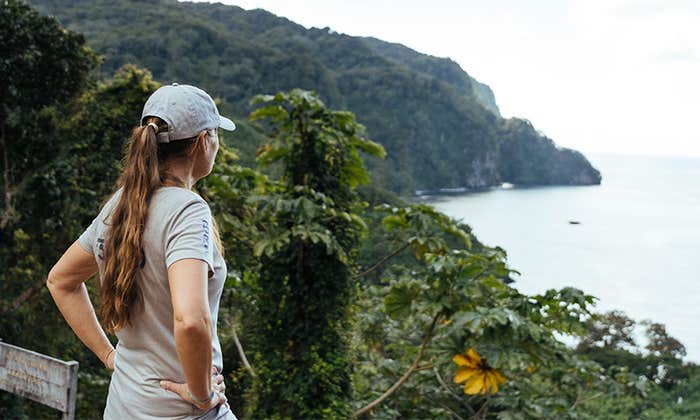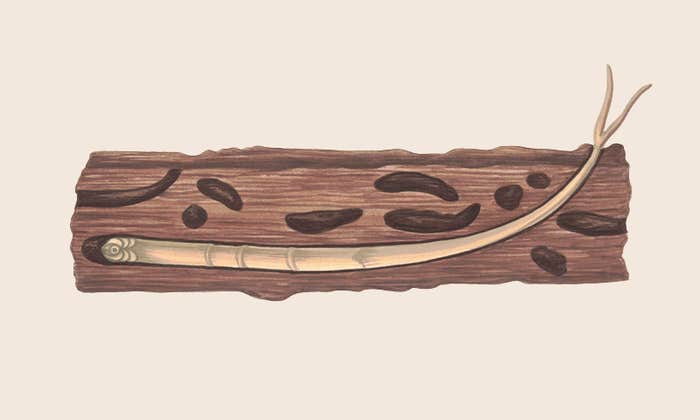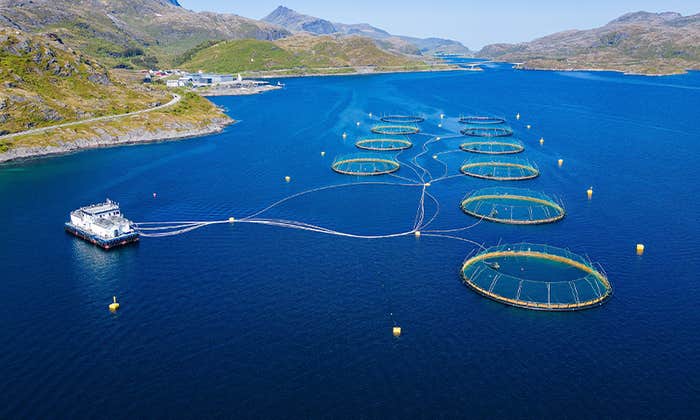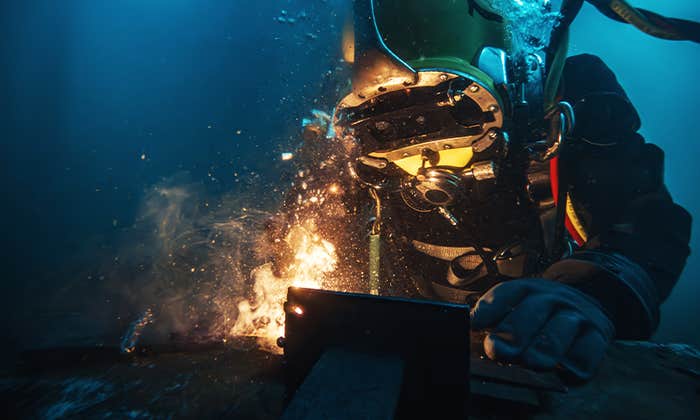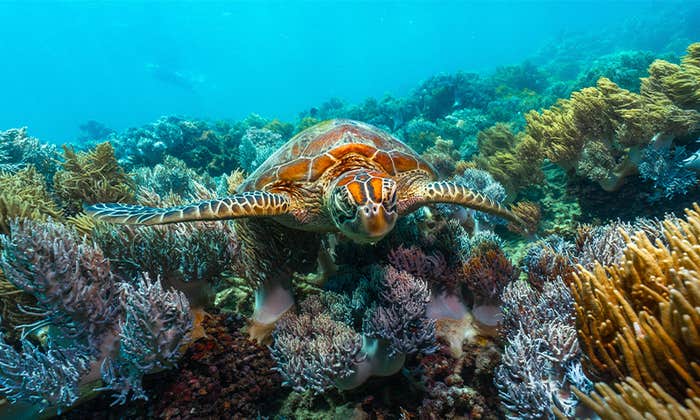Inside a small, well-lit room in Apollo Beach, Florida, a team of scientists in white lab coats and purple gloves dip coral larvae in and out of liquid nitrogen, which spills out of blue containers as if from miniature fog machines.
The group’s mission: Cryogenically freeze coral larvae, the coral’s swimming offspring, in early development. If this team of scientists is successful, the larvae with which they work will be frozen in time and stored in biobanks. Perhaps they’ll be reanimated in a few months, grown, and returned to the Florida reef system. Perhaps they’ll wait years or even decades to be reawakened.
As ocean temperatures rise around the globe, and massive coral die-offs continue to mount, some scientists have worked to save, restore, grow, or move corals from one place to another. Others are trying to—literally—freeze them in time.
Corals’ biological clocks usually orient to a full moon in summer.
Currently up for indefinite preservation in the lab is pillar coral (Dendrogyra cylindricus). It’s “just the most amazing coral ever, I think,” says Mary Hagedorn, who is considered a pioneer of coral cryobiology, and is a senior research scientist with the Smithsonian Institution. On a Caribbean reef, mature pillar coral might look like melted sandcastles or like rounded skyscrapers of a thriving underwater metropolis. They might resemble brain coral, with a ropey, maze-like exterior, or they may appear fuzzy with small waving tendrils.
Florida’s Fish and Wildlife Conservation Commission considers them a threatened species. Other organizations, such as the International Union for Conservation of Nature, have included the species on their Red List as critically endangered. If Hagedorn and her team are successful, it will join at least a dozen other species of coral that have been cryogenically preserved—out of more than 800 species known worldwide.
Flash-freezing living material takes precision. In the case of coral, that challenge is at least doubled, because what we call coral is actually a consortium of the living animal, its symbiont algae—and microorganisms.
Successes in the cryopreservation process for coral so far mostly involve innervating sexual material such as sperm and eggs, called gametes. Hagedorn’s group takes the challenge one step further.
In Apollo Beach, Hagedorn and a Smithsonian colleague linked up with the Florida Aquarium’s Keri O’Neil, director and senior scientist of the coral conservation program, and a nine-person international group of scientists. The team’s workspace includes three greenhouses holding seawater tanks on the Florida Aquarium’s 20-acre conservation campus. Their mission to cryofreeze—and then thaw and settle and raise—at least some of the cryopreserved coral larvae could demonstrate that the process works as a conservation technique. If the team successfully reawakens and propagates the frozen larvae, they believe their work will be the first time that larval-stage coral live through the cycle of cryofreezing, thawing, and growing to maturity. The Coral Research and Development Accelerator Platform, an international research consortium with backing from G20 nations, funds the project as part of an effort to bank corals.
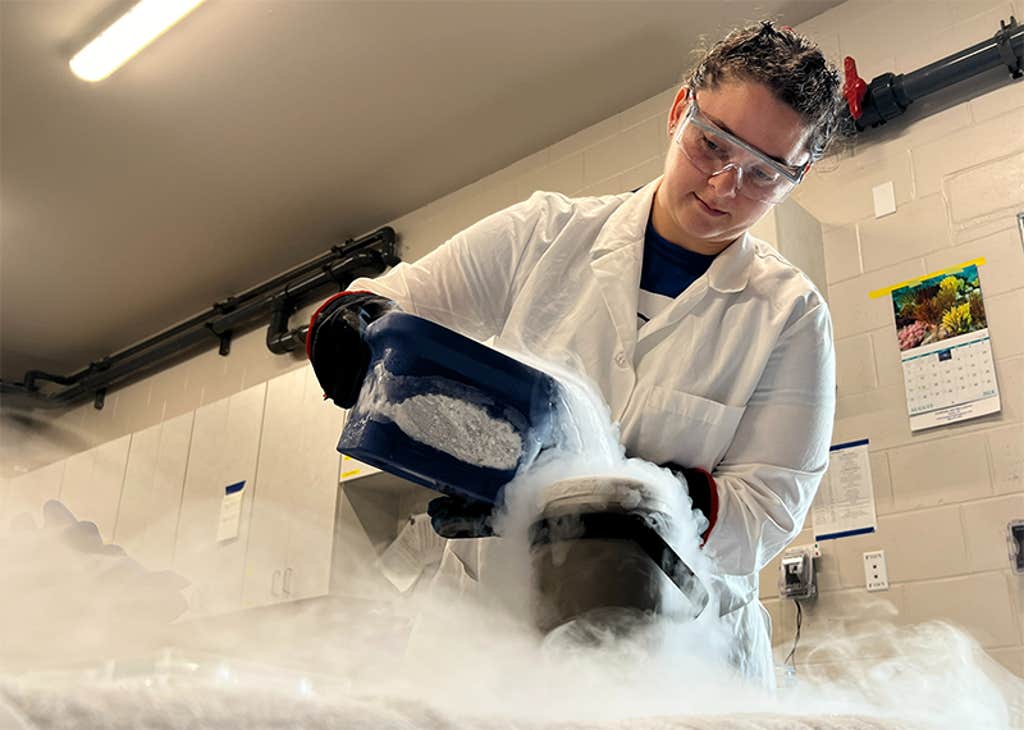
In the wilds of Florida’s waters, corals’ biological clocks usually orient to a full moon in summer. Pillar corals spawn in August, roughly 80 to 90 minutes after sunset. An exhale—and the corals broadcast sperm and eggs into the water. These gametes mix and develop into larvae. Larvae swim and settle into polyps. Growing polyps become colonies.
But hot marine temperatures force the corals onto a diet with fewer than half the calories they usually consume. As seas grow warmer, colonies in Florida’s waters bleach, lose their algae symbionts, and starve. Coral may bleach after several weeks of stress, such as a 2-degree Fahrenheit increase in water temperature. A safe marine temperature for this area ranges between 73 and 84 degrees Fahrenheit. In 2023, when water temperatures consistently remained 5 degrees hotter than usual during the summer months, Florida’s Fish and Wildlife Conservation Commission recorded the worst bleaching event documented for Florida’s reefs.
Freezing coral larvae is a sort of archival mission to buy time, a chance to preserve this biodiversity for the future. A future of possibilities in which marine temperatures will level out—though coral biologists are pretty grim-faced about that—or scientists will have figured out a way to keep coral reefs thriving despite the threats. But for that future coral to live, it is not enough for the scientists to master the technique of thawing and growing its larvae, of course.
Let’s say it’s 2075, and scientists reawaken a few hundred larvae to return to reefs made ready for their reentry. When the corals come out of their slumber, they will also need their algae partners to survive.
Algae photosynthesize energy for the corals (and lend their colorful hues), and corals keep algae safe from predation. But when marine temperatures spike, corals expel their algae, leaving bleached coral skeletons scattered throughout the reefs.
For now, any reawakened larvae still find their symbionts from healthy neighboring adults, O’Neil says. But, what if all of the partner algae has disappeared? In Hagedorn’s opinion, algae must be the other half of the cryo-bank.
Freezing coral larvae is a sort of archival mission to buy time, a chance to preserve this biodiversity for the future.
“The symbionts are the hardest cell in the world to cryopreserve, without a doubt, because they’re part animal and they’re part plant, and they have a cell wall …” Hagedorn trailed off. We were speaking via Zoom between her visits to the aquarium’s conservation lab. A model sailboat with a teal sail occupied the corner of her screen.
Freezing material too slowly can form ice crystals, which are especially deadly to algae. Ice punches a hole through a cell’s wall, killing the animal or genetic material. Cryopreservationists freeze materials into the -320 degrees Fahrenheit, using techniques similar to storage for human embryos and genetic material for our artificial reproduction.
About 10 years ago, cryoengineers from the University of Minnesota’s ATP-Bio program developed a laser for Hagedorn to use—first on zebrafish embryos and now on coral larvae. Two years ago, Hagedorn figured out a way to apply the rewarming technique to algae.
“What the laser does is it warms the material at millions of degrees per minute, and that stops a lot of ice formation,” she says. “Ice is really your enemy in cryopreservation, because it can damage cells.”
Science must keep up with both sides of the process, freezing and thawing, for cryopreservation to work.
Baby on Board,” reads a sticker slapped to the back of Erinn Muller’s minivan. Muller, senior scientist and director of the gene bank at Mote Marine Laboratory and Aquarium in Sarasota, keeps an office fewer than two hours’ drive south on I-75 from the Florida Aquarium. It’s not her own offspring in tow. Across Florida, a statewide exchange of coral babies takes place in rest stops along the interstate, and she’s a crucial part of that chain.
Biological donations of corals—some destined for cryopreservation—come into Muller’s facility from marine construction projects and other aquarium facilities; donations go back out to partner facilities or to the reefs. Exchanges happen in batches of 10,000 larvae at a time. Of those numbers, about 500 could grow to a little larger than an inch. Muller holds up her thumb and forefinger in an O about the size of a silver dollar, to demonstrate.
Muller arrived a few minutes late to our interview because the corals in her lab at Mote took the team by surprise and spawned a day early. She’s been kept busy debriefing on which species have spawned (Orbicella faveolata, or mountainous star coral, and Colpophyllia natans, or boulder brain coral) and which other species they’re waiting on. Her research focuses on identifying corals that are resilient to major threats such as climate change and coral disease, and includes propagation: growing corals to return to the reefs.
Some members of Muller’s lab team previously trained in cryopreservation techniques with Hagedorn “who’s, like, the queen,” Muller says. In spring 2023, part of the Mote team spent six weeks with Hagedorn in Hawaii, learning about cryopreserving coral gametes. Fresh sperm have a window of viability that lasts only a couple of hours, which poses a challenging deadline for scientists to match eggs to develop into larvae. But if they are frozen, these gametes wait in a biobank until scientists are ready to use them.
“Every single coral that we have spawn, we preserve the sperm, so that we can start building our cryo-bank,” Muller says.
Roughly 20 minutes’ drive north of the Apollo Beach conservation campus, the Florida Aquarium maintains a proud coral reef conservation wing. O’Neil cameos on video kiosks to instruct the nearly million yearly visitors about the work the aquarium does to preserve corals in biobanks and holding tanks. On the screen, she lifts “living books”: small blocks, about an inch wide each, with corals growing from them. About 10 different native species, including the gregarious pillar coral, might one day go back into Florida’s waters out of the efforts the aquarium supports to restore the state’s coastal reefs.
The scientists involved in this work feel increased urgency with each passing marine heatwave.
“The whole idea of this sort of global biobank for me was born out of watching the horrible things happening to Florida corals,” Hagedorn says. “My thought to you is: Hold on.” With a bit more liquid nitrogen, maybe they can stop—or at least pause—time to help figure out a future where corals thrive. ![]()
Lead photo by John A. Anderson / Shutterstock
Prefer to listen?

































